Recover Password
Lost your password? Please enter your email address. You will receive a link to create a new password via email.
Get New Password
Don't have an account? Sign Up

Registration
Already have an account? Please login Here

Sailing vs. Powerboating: Which is Right for You?
- July 12, 2024
- Sailing Tips
- 3 mins read
Choosing between sailing and powerboating can be a tough decision for anyone looking to spend time on the water. Each type of boating offers unique experiences, advantages, and challenges. Understanding the key differences between sailing and powerboating can help you decide which is the right fit for your lifestyle and preferences. Here’s a comprehensive comparison to guide you in making an informed choice.
The Basics of Sailing
Sailing is the art of navigating a boat using wind as the primary source of propulsion. It requires skill, knowledge of wind patterns, and an understanding of how to manipulate sails.
Pros of Sailing
* Eco-Friendly: Sailing relies on wind power, making it an environmentally friendly option with no fuel emissions.
* Cost-Effective: Once you’ve invested in a sailboat and its equipment, operating costs are relatively low since you’re not dependent on fuel.
* Physical Activity: Sailing is a hands-on activity that involves trimming sails, steering, and balancing the boat, providing good exercise.
* Tranquility: The absence of engine noise offers a peaceful and quiet experience, allowing you to connect more deeply with nature.
* Skill Development: Sailing requires learning and honing a variety of skills, including navigation, weather interpretation, and sail handling.
Cons of Sailing
* Steep Learning Curve: Mastering sailing techniques and understanding wind patterns can take time and effort.
* Weather Dependency: Sailing is highly dependent on wind conditions, which can limit your ability to go out on the water.
* Slower Travel: Sailboats generally travel slower than powerboats, making long-distance travel more time-consuming.
* Space and Comfort: Sailboats often have less space and amenities compared to powerboats, which can affect comfort on longer trips.
The Basics of Powerboating
Powerboating involves using a motor to propel the boat, allowing for faster speeds and greater control regardless of wind conditions.
Pros of Powerboating
* Speed and Efficiency: Powerboats can travel at higher speeds, making them ideal for covering long distances quickly.
* Ease of Use: Powerboating typically requires less skill and training compared to sailing, making it more accessible for beginners.
* Weather Independence: Powerboats are less affected by wind conditions, providing more flexibility in planning trips.
* Comfort and Amenities: Powerboats often come equipped with more space and luxurious amenities, enhancing comfort during trips.
* Versatility: Powerboats are suitable for a wide range of activities, including watersports, fishing, and cruising.
Cons of Powerboating
* Fuel Costs: Powerboats require fuel, leading to higher operating costs and environmental impact.
* Noise and Vibration: The engine noise and vibration can be less relaxing compared to the tranquility of sailing.
* Maintenance: Powerboats may require more maintenance due to the engine and fuel systems.
* Limited Skill Development: While powerboating requires knowledge and skill, it doesn’t offer the same level of engagement and challenge as sailing.
Factors to Consider When Choosing
Personal Interests and Lifestyle
* Adventure vs. Relaxation: If you enjoy the challenge of learning new skills and the thrill of harnessing the wind, sailing might be for you. If you prefer speed, convenience, and a broader range of activities, powerboating could be the better choice.
* Physical Activity: Consider how much physical activity you want to incorporate into your boating experience. Sailing involves more manual effort, while powerboating is generally less physically demanding.
Budget and Costs
* Initial Investment: Both sailboats and powerboats have a wide range of prices. Consider your budget for the initial purchase, as well as ongoing costs.
* Operating Costs: Factor in the cost of fuel for powerboating versus the lower operating costs of sailing. Maintenance expenses should also be considered.
Environmental Impact
* Sustainability: If reducing your environmental footprint is important, sailing offers a more eco-friendly option due to its reliance on wind power.
Learning and Skills
* Learning Curve: Decide how much time and effort you’re willing to invest in learning. Sailing requires more training and practice, whereas powerboating can be picked up more quickly.
* Skill Development: Sailing provides continuous opportunities for learning and mastering new skills, while powerboating focuses more on navigation and handling.
Both sailing and powerboating offer unique and rewarding experiences on the water. Your choice will depend on your personal preferences, lifestyle, budget, and how you envision spending your time boating. Whether you’re drawn to the serenity and challenge of sailing or the speed and convenience of powerboating, both options provide fantastic ways to enjoy the water.
For more insights, tips, and resources on boating, visit www.kitsapsailing.com . Happy boating and may you find the perfect vessel to match your desires!
July 9, 2024 - In Sailing Tips
July 16, 2024 - In Sailing Tips
Related Posts

Understanding Tides and Currents: A Boater’s Survival Guide

From Sailor to Chef: Easy Onboard Meals for Boaters
Leave a reply cancel reply.
Your email address will not be published.
COPYRIGHT KITSAP SAILING
Digital Marketing & Web Design by Aldermedia
Please fill the required fields*

- Why Membership
- Basic Skipper – Sailing
- Basic Skipper – Power
- Premium Membership Packages
- Pocket Cruisers (31′-35′)
- Mid-Size Cruisers (36′ – 39′)
- Large Cruisers (40′ +)
- Get Charter Approval
- Skippered Charters and Group Events
- International
- Club Trip – Croatia 2024
- Club Trip – BVI 2025
- Club Nautique – US SAILING Classes
- Club Nautique – Schedule of Classes
- Special Lesson Package – SAIL
- Other Sailing Classes
- Advanced Sailing – Coastal & Offshore Passage Making
- Private Instruction
- Powerboating School
- Special Lesson Package, POWER
- Schedule of Powerboating Classes
- Jeanneau Sailboats
- Jeanneau Power Boats
- Charter Fleet Boat Ownership
- Get to Know Jeanneau
- Upcoming Special Events!
- Monthly Calendar
- Women On the Water!
- Crew Connect
- Club Nautique Quizzes!
About Club Nautique

Members sailing by the Golden Gate Bridge
The fleet includes powerboats like this Velasco 37
New sailors love our Basic Keelboat class!
Members can enjoy sunset sails weekly at our Hump Night events
Our incredibly popular Catamaran class is great practice for anyone wanting to charter abroad!
Jeanneau boats available for sale
Jeanneau powerboats also available for sale
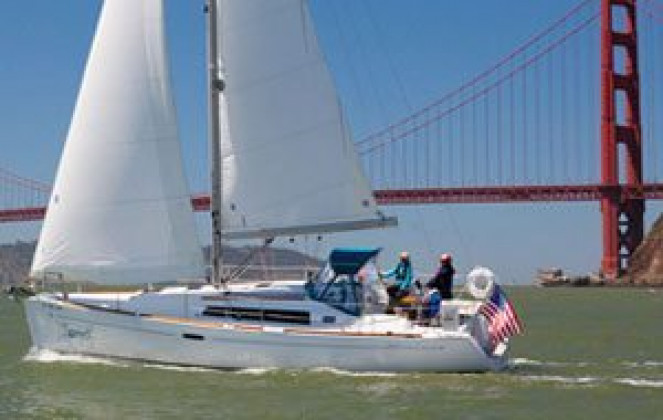
Charter a Yacht on San Francisco Bay!
Put yourself at the helm of the most impressive fleet of sail and power boats on San Francisco Bay
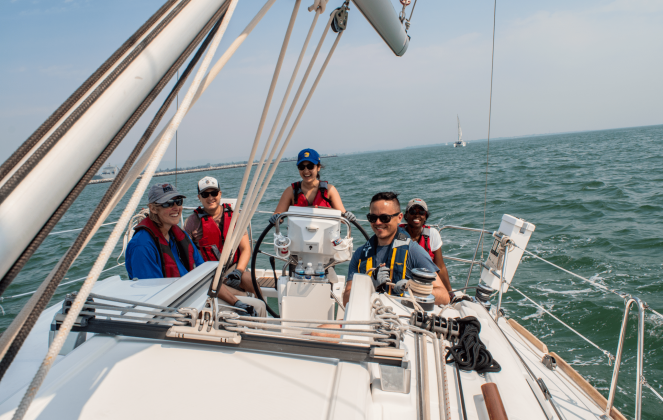
Sailing & Powerboating School
Build skills and confidence in our award-winning sailing and powerboating school. US Sailing / US Powerboating Certification
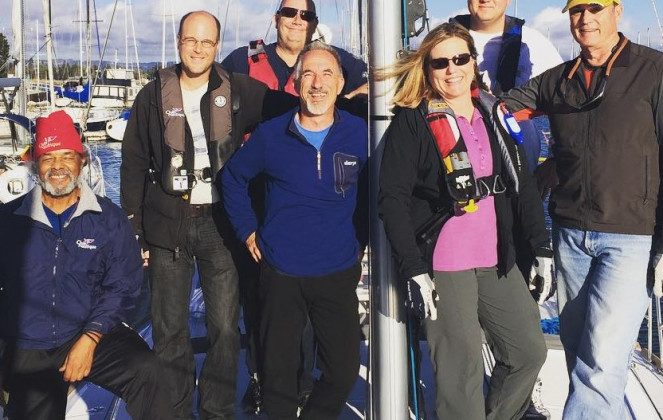
Membership Benefits
Club Nautique members enjoy deeply discounted charters, reduced prices for classes and great events to meet new friends and live the lifestyle
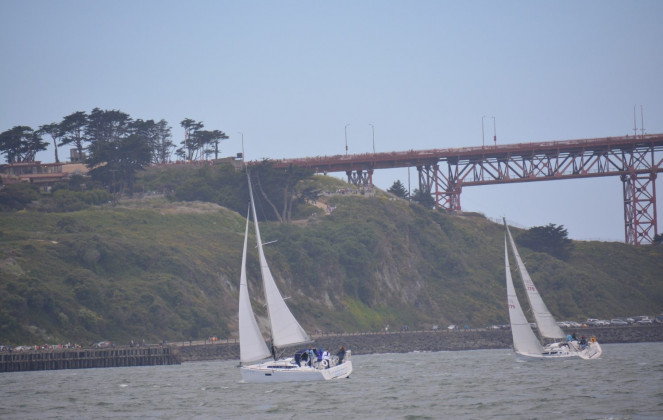
Club Nautique - Rates, Deals and Fleet info
Be sure to check here for the latest special charter deals!!!
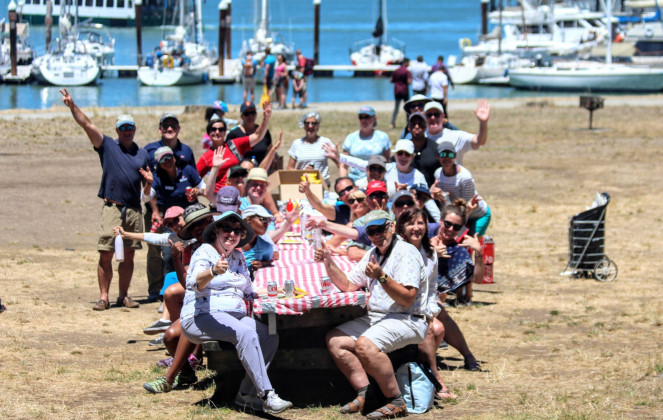
We create fun year round! Join us for seminars, flotilas and events. We'll share experiences and a lot of laughs and learn some stuff as we go!
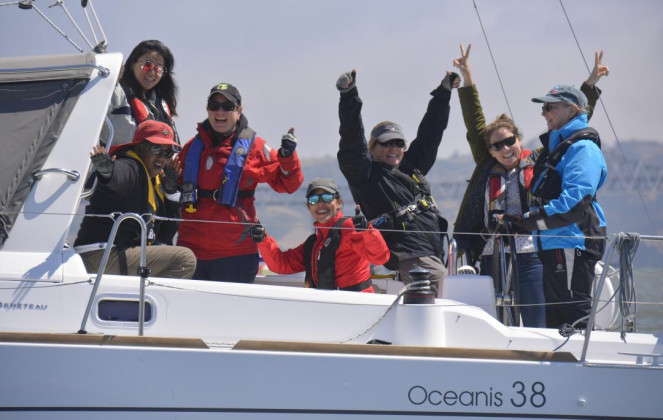
We know boating and we want to share it with you!
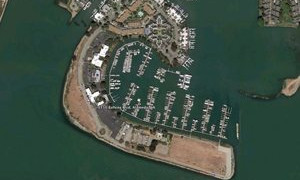
Alameda Location
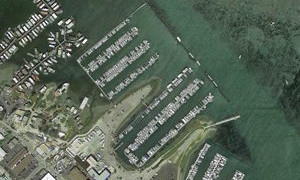
Sausalito Location

Quick Contact
Copyright © 2024 Club Nautique LLC.. Web Development by Computer Courage .
- Privacy Policy
Sign Up for Our Newsletter
- First Name *
- Last Name *
- Email Address *
- Location Preference * Alameda Sausalito Puerto Vallarta
- Phone This field is for validation purposes and should be left unchanged.
Get in Touch With Us

- Find A School
- Certifications
- North U Sail Trim
- Inside Sailing with Peter Isler
- Docking Made Easy
- Study Quizzes
- Bite-sized Lessons
- Fun Quizzes
- Sailing Challenge

Florida Sailing and Powerboating School and Charters is an ASA affiliate school and charter service located in Sarasota, Florida. With boats and instructing locations around the Sarasota/Bradenton, St. Petersburg/Clearwater, and Tampa Bay area including the Gulf of Mexico. Our sailing and boating waters extend over the entire Tampa Bay waters with easy access to the Gulf of Mexico and points northward and southbound. Our beaches locally are known for their beautiful white sugar sand, amazingly clear blue-green waters, and often the area is top-ranked among popular destinations for travelers to west central Florida. Typical conditions permit year-round on-the-water activities. Our locations are in family-friendly areas and close to popular attractions like Bush Gardens in Tampa and nearby Orlando with Disney and MGM theme parks. The accommodations close to many of our locations make easily accessible nearby visitor attractions. Thus offering many options for day and night-time vacation activities and make possible combining your learning experience at Florida Sailing and Powerboat School with relaxation time for you and family after a busy day on-the-water.
We are a full-service ASA school with certified instructors available to teach ASA 101, 102, 103, 104, 105, 106, 111, 114, 118 . Our school also offers certification as part of an IQC-Instructor Qualification Clinic which leads to IQ-Instructor Qualification and the opportunity to teach ASA certifications. Our charter services include captained full day, half day, sunset, and multi-day trips. The variety of boats available range from smaller size (14 to 24 ft.) offered to master the fundamentals of sailing to our larger cruising sail for the bigger groups and more advanced ASAcourses. We also offer sail bare-boat charters and rentals.
Our school and instructors bring together the skills and teaching techniques of several local USCG licensed captains who are ASA certified instructors and can qualify you for all ASA levels of certification. Their specialized local knowledge, along with proven instructing techniques educating beginner to skilled and seasoned students, incorporates combined progressive educational processes into an instructional program including the important theoretical knowledge in the basics of boats and boat handling followed by practical skills application on-the-water. Our captains also share a wealth of local knowledge for the nearby areas of interest to ensure you can safely and confidently navigate local waters and learn to apply this knowledge when you travel back to your home base and all future destinations. Most have years of experience in other popular boating areas on the east and west coasts of Florida, the Florida Keys and elsewhere in the United States, the Caribbean-including the BVI’s and US Virgin Islands and other popular destinations, and globally with experience in well-known trip destinations like Greece, Croatia, Italy, Spain, etc. If your plans include an interest to charter outside the USA, we will train you to a level of certification that offers you the ASA IPC-International Proficiency Certificate and permits a person to skipper bare-boat charters almost anywhere on the globe.
Florida Sailing and Powerboat School and Charters welcomes families, groups and individuals for personalized instruction and certification to learn boating and boat handling skills from beginner to the experienced boater/sailor wanting to advance, enhance and expand their skill set. Contact us today for a customized quote to your needs.
American Sailing Certifications Offered

Contact Information
| Address | 2001 Whitfield Park Ave.SarasotaFlorida34243United States |
|---|---|
| Phone | (941) 500-2485 |
| Website | |
| Social Media | |
| | |
Other Popular Schools...

- Learn To Sail
- Mobile Apps
- Online Courses
- Upcoming Courses
- Sailor Resources
- ASA Log Book
- Bite Sized Lessons
- Knots Made Easy
- Catamaran Challenge
- Sailing Vacations
- Sailing Cruises
- Charter Resources
- International Proficiency Certificate
- Find A Charter
- All Articles
- Sailing Tips
- Sailing Terms
- Destinations
- Environmental
- Initiatives
- Instructor Resources
- Become An Instructor
- Become An ASA School
- Member / Instructor Login
- Affiliate Login

Sailboat vs Powerboat - Which is Right for You?

Sailboats and powerboats both have unique advantages and disadvantages. You have to weigh the pros and cons of each to know which boat is right for you.
Sailboats require a more hands-on approach, which many people prefer. Yet, powerboats have less maintenance and more speed. Which kind of boat you choose depends entirely on what kind of experience you want to have.
Powerboats are easier to operate, and they require a little experience. But, they are costly to keep running and you’re reliant on how much fuel you brought on board.
On the other hand, sailboats require training and experience. But, sailing is the purer boating experience, and many people prefer it because it offers them the freedom to travel anywhere in the world with only the wind.
Table of contents
Should You Get a Powerboat?
Powerboats are fast, fun, and spacious. For people who just want to get out on the water, without much setup, motorboats provide that easy access.
Depending on the boat, there are tons of family activities to do, such as tubing, waterskiing, wakeboarding, or fishing. Or, you can just enjoy a cruise around the waterways.
Powerboat Pros
Powerboats typically have more deck space because there isn’t as much hardware taking up space as in a sailboat. So, you can take out more people at a time, which is a pro for people with big families or who plan on taking many people out with them each time.
Often, the galley and cabin area has more space in a motorboat as well. People who plan on taking long off-shore fishing trips prefer motorboats because of the deck space for gear and people. Also, motorboats don’t have the same deep hull as a sailboat, so you can get into shallower waters if necessary.
If you’re new to boating, a powerboat might appeal to you more than a sailboat because there isn’t as much training involved in learning how to operate it. Sailboats take months (sometimes years) of experience to get confident with. With a motorboat, all you need is a GPS and a vessel license.
Also, to operate a motorboat, you’re only reliant on the sun shining. You don’t have to wait for wind conditions to be perfect. You can just get up and go whenever you feel like it. Unlike with sailing, where you are subject to changes in wind and tides.
Powerboat Cons
Even though powerboats are easier to operate and give you more space, they are more expensive to operate. You’re reliant on the engine to move, and you’ll likely use a lot of fuel each time you go out, which can quickly add up. Also, it’s less environmentally friendly than a sailboat, which uses minimal amounts of fuel.
The engines on powerboats are more expensive too. If for some reason you have to replace Or repair the engine on your boat, you can expect to pay a pretty penny. For that reason, it’s important to do regular check-ups and maintenance on your engine to keep it running smoothly.
The engine itself is also loud and smelly, which some people might say retracts from the experience of being out on the water. For people who get seasick especially, that smell doesn’t help.
Basically, with a powerboat, expect to pay more and have an experience that’s focused more on the water activity, rather than the joy of being on the water.
Should You Buy a Sailboat?
Sailing is one of the oldest methods of transportation, and that classic romantic feeling remains. With sailing, you have to pay attention to wind conditions, before you go out and as you’re on the water.
Sailboat Pros
Many people prefer sailing because it forces you to be in tune with the elements and the boat itself. Sailing is a very hands-on activity that requires training and practice to do effortlessly.
Because more effort goes into sailing, most people find it to be a rewarding experience that rejuvenates and refreshes the senses and the mind. You could compare operating a sailboat to doing yoga. All the pieces have to flow together, including the people on board.
Even small sailboats have trolling motors onboard. But, most sailors try to use the motor as little as possible and rely solely on the wind and tides. Not having a large engine saves you money on fuel and maintenance costs.
Sailing is much better for the environment than powerboats are. Sailing doesn't do any damage to the environment, as long as you stay off reefs and don’t allow trash to fall into the water. Motor usage is minimal, so you don’t contribute to the world’s fuel consumption as much. Many sailors pride themselves on being able to sail their boat without using the motor at all, even when it comes to docking.
Also, since sailboats rely on the wind, you can travel anywhere in the world if you want. There are countless accounts of people crossing oceans with only the wind in their sails.
Or, if sailing across the Atlantic isn’t for you, many people enjoy island hopping in the Caribbean for months at a time. If that appeals to you, you might be a sailor.
Unlike with a motorboat, you can go virtually anywhere on a sailboat with a bit of weather planning and manpower, no fuel necessary.
Sailing is a more satisfying experience and a quieter one as well. Since wind powers a sailboat, there’s no engine noise or smell to hinder your experience.
Some might say sailboats are for those people who are more adventurous at heart.
Sailboat Cons
Even though some people enjoy the hands-on aspect of sailing, it does require training. It’s dangerous to operate a sailboat on open water without proper knowledge of its workings.
Sailboats have a lot of moving parts and hardware. Many people grow up sailing and get their experience that way. But, if you aren’t someone who grew up sailing, you should consider a sailing class or even asking an experienced sailor to take you out and teach you what they know.
If you’re someone who doesn’t want to take the time to learn how to sail , it might not be the right boat for you.
Then, there’s the fact that you’re reliant on the right conditions for sailing. If there’s no wind or too much wind, your sailing experience won’t be as enjoyable or even possible. If you live somewhere that doesn’t have regularly good sailing conditions, that might prove to be a major con for you.
Or, if you don’t have a schedule that allows you to go sailing whenever the conditions are right (which could be in the middle of the week), you might not get as much sailing time out of your sailboat as you’d like.
There is no quick outing on a sailboat. It requires planning with the weather and tides, setting up the rigging and sails, and being at the mercy of the wind. So, if you don’t want your outing to take up most of the day, sailing might not be for you.
Because sailboats have deeper hulls, you have to be careful of shallow areas. It is possible to get stuck with a sailboat.
Also, many people choose to keep their sailboat in a slip at a marina because anything over 20’ is more difficult to transport and store. With a deck slip, you can keep the mast up and the rigging ready to go, so there’s less set up a time when you do want to go out.
So, if you’re in the market for a sailboat, make sure to check the cost of local dock slips as well and decide if that’s in your budget.
Because of the sails, mast, and rigging, you have less deck space with a sailboat. To get the deck space you desire, you’ll likely have to counter with a larger sailboat.
Finally, sailing is more of a commitment than a powerboat, but it’s a more rewarding experience that boating purists deem worth it.
Sailboat vs Powerboat: Which is Right for You?
There’s a lot to consider when it comes to deciding on a sailboat or a powerboat. Ultimately, it comes down to what kind of boating experience you’re looking for, and how much time you’re willing to commit to it.
Motorboats are a hobby, while sailboats are more of a lifestyle.
If you want to get out on the water without much fuss on choice weekends with your friends and family, a powerboat will get you out there. But, expect to pay high fuel prices and sacrifice some of the experience of being on the water.
On the other hand, if you’re looking for a way to get closer to nature, yourself, and possibly explore the world, a sailboat is the vessel for you. A sailboat requires more training to operate, more time to plan trips, and often you get fewer amenities with it.
Despite that, sailing is a purer boating experience that forces you to focus on the task at hand and the elements around you. If you plan to sail with your family or friends, it’ll be a bonding experience for everyone involved.
Related Articles
Daniel Wade
I've personally had thousands of questions about sailing and sailboats over the years. As I learn and experience sailing, and the community, I share the answers that work and make sense to me, here on Life of Sailing.
by this author
Most Recent

What Does "Sailing By The Lee" Mean?
October 3, 2023

The Best Sailing Schools And Programs: Reviews & Ratings
September 26, 2023
Important Legal Info
Lifeofsailing.com is a participant in the Amazon Services LLC Associates Program, an affiliate advertising program designed to provide a means for sites to earn advertising fees by advertising and linking to Amazon. This site also participates in other affiliate programs and is compensated for referring traffic and business to these companies.
Similar Posts

How To Choose The Right Sailing Instructor
August 16, 2023

Everything You Can Pull Behind A Boat
May 25, 2023

Cost To Sail Around The World
May 16, 2023
Popular Posts

Best Liveaboard Catamaran Sailboats
December 28, 2023

Can a Novice Sail Around the World?
Elizabeth O'Malley
June 15, 2022

4 Best Electric Outboard Motors

How Long Did It Take The Vikings To Sail To England?


10 Best Sailboat Brands (And Why)
December 20, 2023

7 Best Places To Liveaboard A Sailboat
Get the best sailing content.
Top Rated Posts
© 2024 Life of Sailing Email: [email protected] Address: 11816 Inwood Rd #3024 Dallas, TX 75244 Disclaimer Privacy Policy
Home Videos
Basic Powerboat Maneuvers Videos
Us powerboating provides a variety of resources to help boaters educate themselves. below are a series of videos and animations that depict some of the on-the-water maneuvers all boaters should be able to perform..
After checking an area, approach the anchoring spot slowly, heading into the wind or current, whichever is stronger. Stop the boat and lower the anchor over bow- do not throw it.
The end of the rode should be attached to the boat before releasing the anchor. Let out the anchor line as the boat drifts downwind. If the wind has too little effect, back the boat very slowly while letting the line run out freely. Avoid backing too fast, which could cause the anchor to bounce along the bottom.
When a scope of 5:1 has been let out, wrap the line around the bow cleat and reverse slowly against it until it becomes taut.
Moorings typically have a large buoy that is attached to an anchor on the bottom with chain. The driver should approach the mooring with it on his side of the boat to keep it in sight throughout the maneuver. Approach at minimum control speed from a position downwind of the buoy, or down current if stronger. Shift into neutral. Use reverse if needed to stop boat. Pick up and secure mooring pennant.
When backing up into the wind or downwind, use minimum control speed. When backing towards the wind the combination of windage and pivot point will help you hold course. It may be more difficult to maintain your course when backing downwind.
If the bow falls off too much you will loose steering control. Before this happens, shift to forward gear and bring the boat back on course. Then back up again with perhaps a slight steering correction to compensate for the wind’s effect.
To master this important maneuver you need to be aware of how your powerboat steers and reacts to changes in throttle and gearshift in different wind and current conditions. Place fenders at dock level and prepare dock lines before making the final approach. Be sure everyone knows what to do with the dock lines.
Come alongside the dock with the bow pointing into the wind or current, whichever is stronger. Approach the dock slowly at a 25 to 45 degree angle and use intermittent power to maintain minimum control speed.
When the bow is 1/2 to one boat length from the dock, make a smooth turn to bring the boat almost parallel to the dock by turning the wheel and briefly shifting into forward. Then shift to neutral. Turn the wheel toward the dock and briefly shift to reverse to bring the stern in as the boat stops.
To avoid a possible collision with a submerged object or another boat it maybe necessary to stop your boat quickly. To be able to respond promptly, keep one hand on the throttle and the other on the steering wheel at all times. All occupants should be in their seats and have a secure grip on the boat. As a boat rolls in a tight turn, it always slides sideways. There is a risk in some boats of the boat’s wake coming over the transom. To avoid this flooding problem, reduce throttle to idle rpm. Make a 90-degree turn. Shift into neutral.
The key to holding position is to anticipate boat drift and make small, gentle corrections early rather than large powerful corrections late. There are two methods for holding position: Bow into Waves, and Stern into Waves.
Since the bow will usually have a tendency to turn away from the wind, you will have to compensate for this by periodically shifting into forward gear and making slight steering corrections to bring the bow back into the wind. Because the bow wants to turn downwind, it is usually easier to hold position with the stern into the wind, provided the waves don’t come over the transom.
Backing away from a dock usually offers the best maneuvering control. It also avoids a problem inherent to forward departures when the boat starts to turn and its stern swings into the dock, preventing the boat from departing cleanly.
Start by turning the wheel away from the dock, which rotates the propeller away from the dock. Shift into reverse, the stern swings away from the dock as the boat backs away. To avoid scraping the bow against the dock, make your turning angle slight.
When clear of the dock, turn the wheel in the opposite direction to bring the boat parallel to the dock. Center the wheel, pause briefly in neutral while counting 1-2-3, then shift to forward.
Minimum control speed is the slowest speed at which you can operate and still maintain steering control. Typically, this is less than the speed produced when the engine is in gear and the throttle is set at idle rpm, and is accomplished by the use of intermittent power.
With the throttle at idle rpm, shift from neutral to forward and back to neutral. This produces a short, gentle pulse of power to maintain steering control. Repeat this technique to keep the boat under control and moving slowly.
If a person falls overboard, immediately swing the stern and propeller away from the person in the water. Shout “Crew Overboard!” and throw buoyant objects such as cushions and life rings toward the person. Assign a spotter. Designate someone to point to the person. Maneuver the boat into a position downwind.
Approach slowly using intermittent power, bow first pointing into the wind and waves with the person in the water on the driver’s side. Shift into neutral and coast to the person. When contact is made, shut off the engine. Attach the person to the boat using a looped line. Assist the person to get back into the boat.
Use a pivot turn to turn your boat in a confined area. Starting at rest, turn the wheel hard over and shift into gear at idle rpm to initiate the pivot turn. Shift into neutral and turn the wheel hard over in the opposite direction, while counting 1-2-3. Shift into reverse at idle rpm to continue the turn, and repeat the steps until the boat has completed the turn.
Capsize Rescue – Centerboard Push
Before initiating a centerboard push rescue, ensure that the sailors are safely in the safety-rescue boat. Begin by grabbing the centerboard of the sailboat and push downward until the boat comes upright. As the boat begins to come upright, grab the gunwale and shroud to complete the righting process. The sailors may now re-enter the sailboat.
Capsize Rescue – Mast tip Lift
The mast tip lift method can be used when the sailors are still in the water. Using minimum control speed, slowly approach from a direction forward of the mast. This keeps the powerboat from running over the mainsail and avoids interference with the sail as the boat comes upright.
Make contact near the top of the mast and turn off the engine. If the mast tip is submerged too far below the water to reach, approach the boat perpendicular to the forestay, grab the forestay or shroud and walk hand over hand up the mast. Lift the mast tip and move hand over hand down the mast and shroud to bring the boat upright.
Towing another boat alongside is often used when bringing a disabled boat into a dock. The towboat should be positioned so that its propeller is far enough aft of the other boat’s stern to turn the tow in either direction.
Fenders should be rigged between the boats to prevent damage. Tie the boats together tightly using bow, stern and spring lines, so there is no movement between them. If a line is slack, it will reduce the maneuverability of the tow.
When coming alongside a dock, approach it at minimum control speed with the other boat on the dockside.
Boating Knots
Knots are essential to every boater. Below you will find a series of instructional videos that will help you tie some of the more common knots used while boating.
Copyright ©2018-2024 US Powerboating. All rights reserved. Website designed & developed by Design Principles, Inc.

About Windworks Sailing & Powerboating Club
Sailing & powerboating in seattle, washington.
Are you an experienced sailor, or are you looking to expand your sailing and powerboating expertise? No matter what your boating expertise and needs, we’ve got you covered. Since 1992, Windworks Sailing and Powerboating Club has been your home for sailing and powerboating lessons, boat charters, and social sailing events! Located 6 miles north of Seattle, Washington along the Puget Sound, our location is both convenient and breathtaking.

What We Offer
Are you looking for individualized sailing and powerboating lessons and experiences? Or, are you a seasoned veteran, looking for your next adventure? With extensive knowledge and resources, Windworks Sailing and Powerboating Club is your go-to hub for all your sailing and powerboating needs.
At Windworks Sailing and Powerboating Club, we offer:
- Sailing lessons, both novice and advanced
- Summer powerboating lessons
- Specialized lessons , events, and clinics, including capri racing, coastal navigation courses, and sailing certifications
- Extensive knowledge of the Puget Sound and San Juan Island region, offering sailing trip consultation for seasoned sailors
- Boats for sale
- Specialized club memberships , including the Windworks Club and the Capri Club, which special access to premier charter boat fleets, discounted certification programs, and more
WWSC US Sailing Certifications
WWSC US Sailing Certified lesson pricing is very affordable and allows you to charter boats worldwide. Ask us about our full range of US Sailing certifications, including Basic Keelboat to Coastal Passage Making classes.
Our Mission
Windworks Sailing and Powerboating Club is committed to making boating available, affordable, and approachable. Fun for both beginners and experienced sailors, we are your home for sailing lessons, boat charters, and social sailing events. Located in Shilshole Marina next to Ballard Locks in Seattle, Washington, we are ideally located for idyllic sailing and powerboating adventures in the Pacific Northwest.
Windworks Yacht Sales
Windworks is the Pacific Northwest’s premier service sailing and power boating community. We are able to offer our clients and customers a full-service yacht brokerage, yacht charter company, U.S. Sailing and U.S. Powerboating accredited school, and the leading sailing club in the region. No other company better enables you to get out and enjoy all the the waters of Washington and Canada.
- Best location in the region : We’re at the biggest and best salt-water marina to sell and show yachts in the region! Windworks is at Seattle’s Shilshole Marina with access to over 18 publicly accessible 70′ slips and heavy walk-by traffic. Your listing will appear on both waterfront and street window displays.
- Club-access advantages : We have over 425 US Sailing members looking to buy boats; if you list your yacht for sale with Windworks you may be eligible receive a substantial commission discount if a member buys your yacht.
- Option to charter : Make your new yacht work for you by placing it in the region’s premier sailing and powerboat charter company.
- Team of experts : We provide a team of full-time staff, shipwrights, and dock staff year round and your listing will be washed and diver inspected. We also have experience and relationships with a wide variety of yacht manufacturers including Hanse, Bavaria, Beneteau, Jeanneau, Catalina, Dufour, Camano Troll, and Lagoon.
- Yachting education : All of our clients can receive US Sailing Lessons at member prices for one year, including access to the advanced Passage-making and Catamaran certifications.
- Yacht sales wide listing coverage : All yachts include free listings in targeted medias including 48 Degrees North , Northwest Yachting , and Yachtworld and the Windworks newsletter with over 4,000 contacts.
- Trade-ins accepted for brokerage : Windworks takes trade-in vessels to offer aggressive price discounts.
- Access to slip space : We provide moorage space to you until you get your permanent slip.
- Track record of success : Established in 1992.

Home Education
Learn to Sail with US Sailing
Whether you’re a first time sailor or an experienced instructor... we have an educational opportunity for everyone...
Part of US Sailing’s vision is to introduce as many people as possible to this great sport. We want to make sure you’re learning in a safe, fun, high-quality environment…because if you’re a well-trained, competent sailor you’ll love sailing as much as we do.
US Sailing provides education and instruction in four separate areas: Small Boat (i.e. day sailing), Keelboat, Powerboat and Windsurfing. Learn more about the different programs offered by US Sailing schools and instructors. We’ll help you decide what kind of boat you want to learn on and find a course to take – and we’ve written the books ourselves to make sure they’re the best around.
Youth Education
Quality instruction at all levels.
US Sailing is committed to ensuring that young people learn how to sail from certified instructors in a safe and fun environment. We have set the standard for youth sailing programs in the U.S. by offering certification courses for instructors and coaches, as well as the innovative Reach STEM education program.
Learn More about Instructor Certifications
- Learn to Sail
- Reach Program - STEM Education
- Junior Big Boat Program Guide
- Youth Development
- US Sailing & SafeSport
Adult Education
Build your skills.
The Keelboat Certification System offers seven levels of adult education ranging from Basic Keelboat through Offshore Passagemaking. These certifications follow a building-block technique of combining learned skills with experience. New sailors gain knowledge and experience at each level and can take their sailing skills as far as they want to go at their own pace
Find a Course Near You
- Certification Courses & Endorsements
- Safety at Sea Courses
- Adaptive Sailing
- Adaptive Sailing Resource Manual
Instructor Training & Certification
Teach others to sail.
For those interested in teaching sailing or powerboating, there are several opportunities to achieve Instructor Certification. We offer certification for smallboat, keelboat, powerboat, windsurfing and STEM instructors. Courses range from 2 days to 5 days, and are hosted by boating programs around the country, year-round.
See All Instructor programs
- Small Boat Instructor Programs
- Keelboat Instructor Programs
- Powerboat Instructor Programs
- Teach Windsurfing
Race Officials Training & Certification
Represent us sailing on the race course.
Race officials ensure quality, integrity, and consistency for all participants in the sport of sailboat racing, from casual weeknight club racing to world championships. Our training and certification programs allows sailors to give back to the sport by supporting the racing sailor out on the water.
See All RO programs
- Find a Seminar
- Host a Seminar
- Race Officials & SafeSport
Risk Strategies - Gowrie Group
- Junior Sailing Safety Guide

Andrew Clouston SVP Programs & Services Email Andrew Clouston

Peri Burns Educational Operations Manager Email Peri Burns 401-342-7963

Bradley Schoch Senior Instructional Designer Email Bradley Schoch

Andi Barton Sr. Education Coordinator Email Andi Barton 401-342-7910
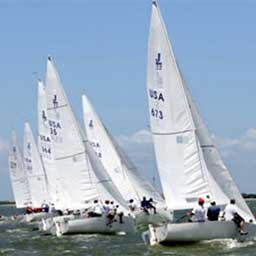
Zeth Morgan Education Coordinator Email Zeth Morgan

Bonnie Braddock Learning Design and Development Specialist Email Bonnie Braddock
Copyright ©2018-2024 United States Sailing Association. All rights reserved. US Sailing is a 501(c)3 organization. Website designed & developed by Design Principles, Inc. -->
I was introduced to boating at eight years old sailing a Sunfish on the Schuylkill River in Philadelphia, Pennsylvania. Since that early age I have spent my life as a boater and enthusiast of any activity on the water. My family summered in Beach Haven, New Jersey where I was introduced to saltwater fishing and the joys of powerboating on the local waters nearby. I purchased my first boat at twelve years old with the help of my father. An older wooden runabout with a small Mercury outboard which we refurbished. It had the steering and throttle in the middle of the rear seating area and the passengers rode in the front. He would drive us to the Delaware River to take it out with my brothers. After growing up in Philadelphia and spending many summers on the Atlantic beaches of New Jersey-Barnegat Bay, Atlantic City, Long Island and surrounding waters my family moved to Bethesda, Maryland. As a young teenager I attended summer camp on the Chesapeake Bay. The YMCA Sailing Camp polished my nautical skills and enlarged my marine education with Royce’s Sailing Illustrated for certification in their program and sailing Flying Scot’s. Summers on “The Bay” served as my foundation in boating. Safety on the water, knowledge and skills for a lifetime of boating. I planned to spend time after High School sailing the intra-coastal waterway doing odd jobs in my custom designed live-aboard sailboat. That plan changed when I was encouraged by my father to enter college for an electrical engineering degree. So be it! After graduating college in upstate New York (Clarkson University-Potsdam, NY-1978) with an engineering degree I entered the business world. Always near water if possible. I started my career on nuclear missile submarines at Newport News Shipbuilding (Newport News, VA), and boating around Virginia Beach-VA, the Great Dismal Swamp, and into the vicinity of Kitty Hawk-NC. Always a boat owner. Moving to Florida in 1979 to get married, start a family, and live life mainly spending time powerboating seemed to be a good option. I still introduced my three children to sailing in an AMF Puffer (13 ft, sloop rigged), my first sailboat. Our family spent much time on the water in the Florida Keys and around Sarasota Bay, Tampa Bay, the Gulf of Mexico and surrounding waters. I became involved in Opti pram sailing at the Sarasota Sailing Squadron-Youth Program with my youngest son who embraced the sailing world more so than the other two. Spent several years on the water as a leader in that program and safety boat as we traveled the state participating in competitions. In 2012 I joined Bay Sailors of Tampa Bay-A Sailing Club to cruise the BVI’s on my first bareboat charter. After two trips to there, I skippered two more trips. One to Croatia (2016), and one to Greece (2017). I really enjoyed sailing on larger vessels and pursued certifications with the ASA-American Sailing Association. Achieving the IPC-International Proficiency Certificate with ASA gave me the credentials to be a bareboat skipper. That interest continued with instructor qualification to teach ASA certifications. In 2018 I added RPBA-Recreational Powerboat Association instructor qualification to teach their series of powerboating certifications. I added a USCG Licensed Captain and 50 Ton Masters as well. In 2019 I started Florida Sailing and Powerboating School and Charters to bring my maritime career to a pinnacle. I also became a licensed Florida Boat Broker in 2019. Certifications and Licenses • USCG Licensed Captain-50 Ton Masters-May 2017 • Certified Instructor for ASA/RPBA to teach sailing and powerboating up to 70 ft length-2016 to current • Florida Boat Broker-2019 • Private Pilot-SEL, Instrument Rated, Jet Aircraft SIC, High Performance, and High-Altitude Endorsement • Scuba Diver-PADI Certified 1978-Advanced Open Water, Tech I Deep Water-2017 Business Related • Owner and CEO of Mar Adentro Marine and Charter Services, LLC established March-2017 • Owner and Head Instructor-Florida Sailing and Powerboat School and Charters-Affiliate School 882 for the ASA-Established February 2019 Organizational Affiliations • Vice Commodore-Bay Sailors of Tampa Bay-A Sailing Club-2017 to 2019 • Commodore-Bay Sailors of Tampa Bay-A Sailing Club-2019 to 2020 • Member-Sarasota Sailing Squadron
Captain Michael B, Yonker
USCG Licensed Captain-50 Ton Masters ASA Certified Instructor RPBA Certified Instructor Licensed Florida Yacht and Ship Broker
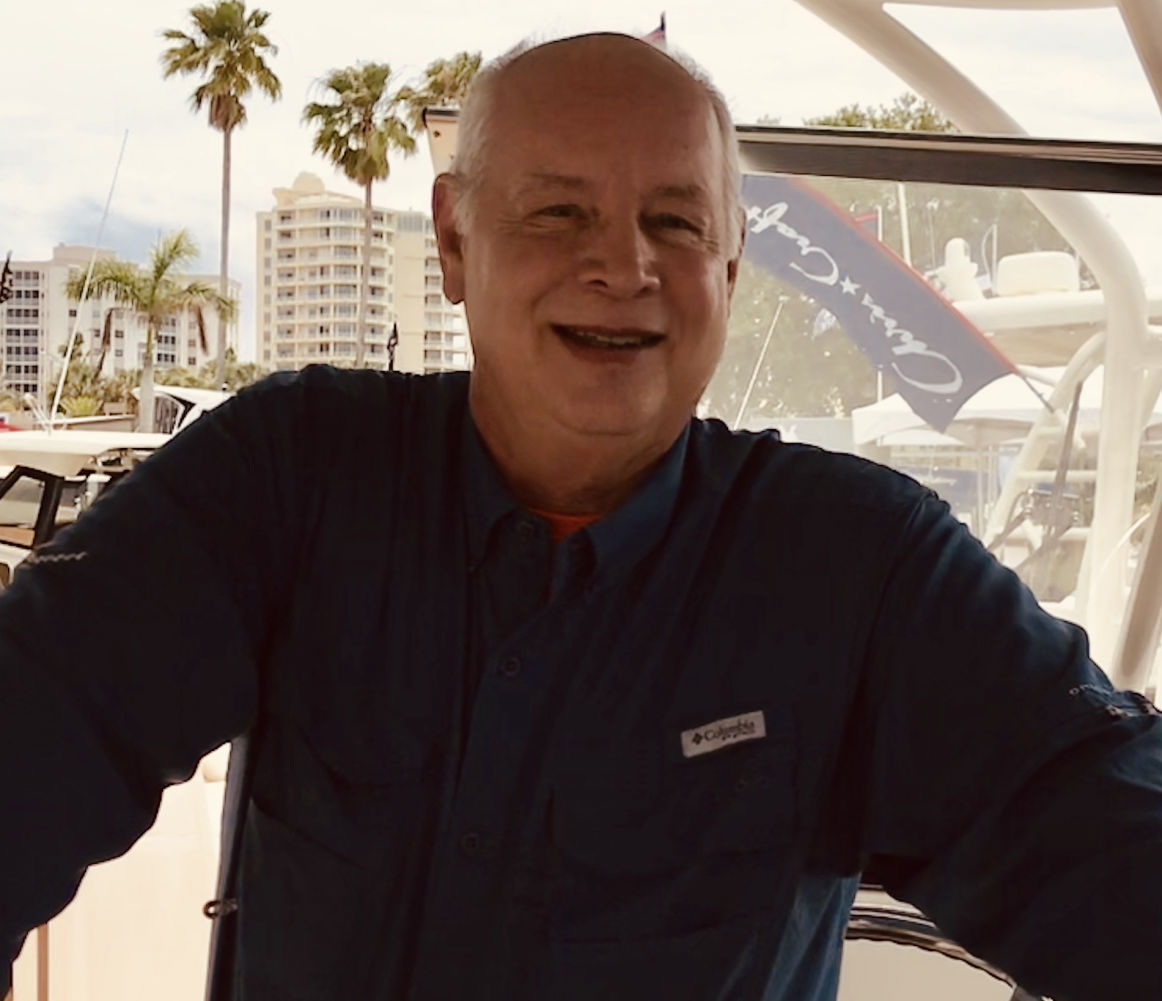
Florida Sailing and Powerboat School and Charters Florida Sailing Academy Florida Powerboating Academy Mar Adentro Marine and Charter Services, LLC. 2001 Whitfield Park Ave. Sarasota, FL 34243
Phone: 941.500.24 85 Office: 941.758.7500 Fax: 941.758.7556 Email Us!
Mar Adentro Marine and Charter Services, LLC. Florida Sailing and Powerboat School and Charters Florida Sailing Academy Florida Powerboating Academy BoatUS Foundation American Sailing Association US Powerboating

Windworks Sailing & Powerboating

Updates From This Business

Limited-time offer!
Until May 4th you can get $150 OFF any US Sailing Lesson & $200 OFF our one time initiation fee.
Portfolio from the Business

Spring Tides Flotilla
Highlights from the Business
Certified professionals
Established in 1992
Budget friendly
Committed to satisfaction
Locally owned & operated
Free parking
Review Highlights

“ We took a Power Boating Basics class (two Saturday's) with Patrick , and it was a great experience! ” in 4 reviews

“ Victor and the rest of the guys on the docks, who always kept the boats in tip top shape helped with any concerns we had. ” in 4 reviews

“ Both Nancy and Elena have been lovely instructors, FULL of information and patience. ” in 4 reviews
Location & Hours
Suggest an edit
7001 Seaview Ave NW
Seattle, WA 98117
Sunset Hill, Ballard
| Closed now | |
Amenities and More
12 More Attributes
About the Business
Business owner information
Business Owner
Windworks has a fleet of 21 sailboats and power boats for charter and offers US Sailing and Powerboating lessons for beginners. We can host private skippered charters for up to 6 people, and have a great corporate program for team building activities. Our fleet starts at 22' to 46' late and brand new model sailboats and powerboats. Save on lessons and rentals by becoming a Windworks member! …
Ask the Community
Ask a question
Yelp users haven’t asked any questions yet about Windworks Sailing & Powerboating .
People also searched for
Scenic View
Party Cruise
Water Sports
Recommended Reviews
- 1 star rating Not good
- 2 star rating Could’ve been better
- 3 star rating OK
- 4 star rating Good
- 5 star rating Great
Select your rating
Overall rating

Stopped by here with a friend who was interested in viewing an available boat. It was a pleasant enough experience. Windworks sells boats and offers lessons and rentals. The gentleman who eventually helped us was focused on the classes and was very informative. He never was pushy, though kept emphasizing that if he wanted to buy a boat he should put down money now otherwise it would be years before another of that model came available. What caused me to pause was that my friend discussed in the beginning that it would be at least two years before getting a boat. I felt there was a bit of a disconnect there. The classroom looked nice. The instructor walked us through with a description of the various available classes and which ones to take in what order. Literature was provided to review later. We were able to sit on the boat my friend was looking at and it was everything he was imagining it would be. No one assisted us with that tour except a worker pointed us in the direction of the boat. That was fine. It was a nice, leisurely experience.
Jun 15, 2022
Thank you for the time it took to write a review for us. I appreciate your kind works and constructive feedback. We proud ourselves on provided top quality customer service and clear, honest, communication. Please feel free to reach out any time with any questions. We have some great new models on the dock for viewing at your leisure! Hope to see you out on the water!
Just completed my 8th class with Windworks - Bareboat Cruising. This was an excellent overnight sailing class taught by Jon Fritzberg, one of the best instructors I've met. Jon set a great tone in the class: Super patient, asked great questions to ensure we all got time on areas we felt needed more attention, and provided very insightful instruction. Well done, Windworks and Jon! Highly recommended.

Great places, great instructors, boarts are in great state, a lot of new boats, good technicians providing help Great captains organizing Friday sunset sails All sorts of activities are done well I chartered boats, I received instructions, i was at sunset sails. a great club
Thank you for your time in writing us a 5* review! We are so pleased to hear about your positive experience and hope to provide you with many more. See you out on the water!

We've been members of Windworks for a few years now and have had a great experience with them. It's so nice to be able to have access to an entire fleet of top-notch boats without all the hassle of ownership. This is a great option with lots of flexibility and the boats are in excellent shape. With respect to instruction, I took the Basic Keelboat 1 class with Nancy last week and it was awesome (my husband is the certified sailor in our family). Very small class, lots of individualized attention, and Nancy was an incredible instructor both in the classroom and out on the water. She's clearly committed to ensuring that her students learn their stuff, and it shows. I'll be doing Basic Keelboat 2 next and am looking forward to it.
Sep 8, 2022
Thank you for your kind and thoughful review. We will be sure to share it with Nancy and the rest of the team! We look forward to seeing you for BK2. Happy sailing!
My wife and I took keel1 sailing class. Bez was the instructor and we had 2 other students. Great class. Nice pace and Bez did a great job explaining everything. Very informative classroom and on the boat. I would highly recommend.
Some friends and I rented a sailboat for the afternoon yesterday. Captain Mike was great! The boat was very clean and comfortable. We were allowed to bring food and beverages of our choice. We sailed around Puget Sound for 6 hours. It was a relaxing and beautiful experience. I don't see how a person could go wrong chartering from Windworks!

I took Basic Keelboat this Fall and in three full days of training earned a certification that I can sail up to a 30 foot tiller steered sailboat. The required experience and study that led to passing the exam was fantastic. The instructors know their stuff. The facilities and boats are great. The weather, the instruction, and the masking policies are inconsistent. I had a sunny, windy, great sailing day with a disciplined instructor who insisted that the student who was drinking coffee in the classroom put their mask back on in the classroom, and if they wanted to drink coffee to take it outside. I was grateful for her discipline and for the weather. Then I had a pretty becalmed and smoky day with an instructor who wore the mask loosely then dropped it regularly to drink coffee in the classroom. The instructor rolled with the weather and we got to learn the outboard engine use pretty well. Finally I had the rainy cold day with safety policies in between concluding with a written test and a certification. I love this place, their training, their facilities, the enthusiasm and knowledge of the instructors. I'm excited to join their rental program and get on the water to try to remember my skills. But I'm dropping two stars for the inconsistency of the safety protocols. That feels like a big bump, and that feels appropriate at a time when the University of Washington, just several miles away, has cancelled almost all in person classroom sessions due to the severity of the pandemic. I don't know if the administration of this otherwise solid institution has policies for their instructors safety protocols, and if they do, what those policies are and how they might be monitored/enforced. Great instruction, great facilities, great boats. They can't control the weather. I wish they had as consistent safety oriented classroom procedures as they have consistent safety oriented procedures on the boat.
Thanks for taking the time to provide us with your insightful feedback. I remember the smoke that season and it was something unprecedented we had to learn to navigate. We apologize for any inconvenience or stress caused for you please reach out to me personally so we can spend time talking about how we can get you out on the water feeling safe and sound! Victor Evans, [email protected]

Windworks has a great fleet of vessels and fantastic instruction. As a US Sailing affiliate they offer the full suite of US Sailing Certifications. The location is perfect and the staff is phenomenal. Schedule a lesson with Nancy, who is both patient and superiorly knowledgeable! I cannot say enough good things about the experience.

Great photo! I will be sure to pass on this lovely message to Nancy. Thank you for taking the time to write this 5* reviews, we certainly appreciate it! See you out on the water!

I've been a Windworks member for about a year now and have really enjoyed chartering and experiencing/learning on different sailboats. This year I decided it was time to buy my own sailboat and stopped by Windworks to check out a listing they had. As sellers the staff were a great in showing me their listings and answering questions about every aspect of the boat. I was really interested, but also interested in checking out other listings in the area. Karolee, one of Windworks agents, proactively offered to help check availability in the area and beyond. When I found the boat I was pretty sure would be mine, Karolee initiated the conversation with selling brokerage, even though they weren't offering co-brokerage. She discovered they were willing to do a lower than standard commision, but I would never have known it. Karolee's involvement from start to finish was top notch! This was the boat for me and she helped every step of the way in arranging the showing, offer, survey, escrow, and import from Victoria, BC. Having taken delivery I am so happy that I went with Windworks for my sailboat purchase. All I had to do was fill out the paper work along the way and Karolee covered the rest. I would definitely recommend working with Windworks whether you are a member or not on your next boat purchase!
All the instructors are good, but Mike is great! You will be on the water in no time with confidence. Highly recommended.
58 other reviews that are not currently recommended
People Also Viewed

Seattle Sailing Club

Lake Union Charters & Adventures

Sangria Maria Charters

Sternwheeler Charters

Seattle Boat Cruise

Anchor Bay Charters

Sailing Seattle

Seattle Fun Boat

Blue Whale Sail

Seattle Boat Share
Best of Seattle
Things to do in Seattle
Browse Nearby
Restaurants
Things to Do
Other Places Nearby
Find more Boat Charters near Windworks Sailing & Powerboating
Find more Boating near Windworks Sailing & Powerboating
Find more Sailing near Windworks Sailing & Powerboating
Related Cost Guides
Boat Charters
Boudoir Photography
Bounce House Rentals
Event Photography
Valet Services
Videographers
Windworks Sailing & Powerboating is a Yelp advertiser.
13 Reasons Why Sailing is Better Than Powerboating
Want to know why sailing trumps powerboating? In this article I'll give you 13 clear-cut reasons why it's the case - and why I'll never go back.
Why is sailing better than powerboating? A sailboat is quiet and clean, whereas a powerboat is not. Sailboats are much cheaper to buy and to run. They're also safer and more reliable. Sailboats are more challenging and exciting than powerboats. Sailing is about the journey, not the destination. Powerboats are better at getting someplace, but it will cost you.
Sailboats are clearly the better choice ... but not for everyone. Of course, it depends. So, to be fair, I'll talk about some of the advantages of powerboats as well - after I've made my case for sailing,
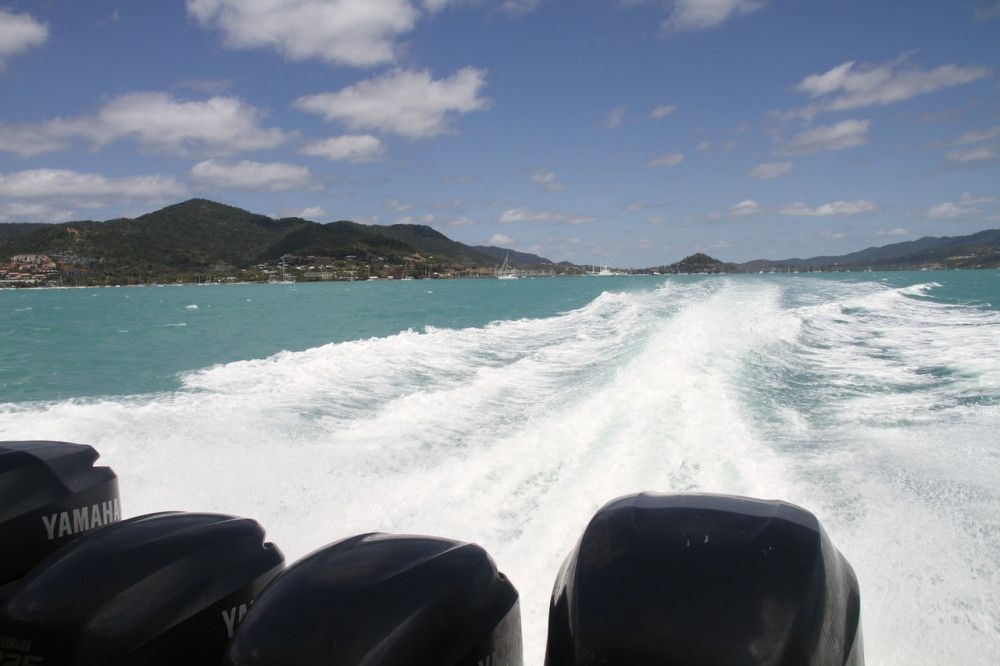
On this page:
2. sailboats are clean, 3. sailing is cheaper, 4. a sailboat is cheaper to buy, 5. sailboats have right of way, 6. a sailboat is safer, 7. sailboats are more reliable, 8. sailing is more exciting than powerboating, 9. sailors work with nature, 10. sailing helps to improve yourself, 11. you get to go more places, 12. you can live on a sailboat, 13. you can cross an ocean in almost any sailboat, disadvantages of sailboats over powerboats, when is it better to choose a powerboat, related questions.
Quiet - I use only this one word on purpose. It's the one major reason why sailboats are better than powerboats, period.
If you're out on the water under sail, you only hear the water splashing on the hull, and you hear the wind, and it's just extremely peaceful.
Now imagine the same cloudless day, and you're in your motorboat. You're relaxing, looking across the water, the birds are shrieking ...
... JJNNNGGGG!
There's this constant screeching sound in the back, as a soundtrack to your beautiful day out.
Some people aren't that bothered, and I really respect that.
But let me point out that your boat's engine can easily reach volumes of 80 dB. That's about your alarm clock going off next to your head - only now the sound goes on and on, and there's no snooze button whatsoever.
When powerboaters say a powerboat gets you somewhere quickly, I suspect that is because getting their very quickly is the only way to get rid of the noise.
Besides being very quiet, sailing is also very environmentally friendly. I'm not at all against using gas, but we have to admit it: using wind instead of gas is just a great way to help the environment. And if that's not something you're concerned about, just think of the smell.
Using wind power is clean. It doesn't smell of anything. Some people like the smell of gas (and so do I). But I like the smell of the salty ocean even more, or the blossoming forest surrounding the lake.
Of course you will use your engine every now and then, and that's fine. But being able to travel without the smell and noise is great. Not only because it removes a nuisance - it actually allows better smells and sounds to reach you.
So, besides being less noisy and smelly, a sailboat is also way less costly than a powerboat.
Running a powerboat is notoriously costly, and for a good reason. You use A LOT of gas. Actually, if you have a really fast powerboat, it's about 25 gallons of fuel per hour. That's roughly $300 (per hour). Yikes.
To be fair, smaller powerboats use a lot less. Cruising at lower speeds in inland water also reduces fuel consumption.
Actually, most powerboats use 1 gallon per hour on average. So an inland weekend trip will cost you anywhere between $30-$80, which perhaps isn't too bad - but that's for the fuel alone.
It becomes really painful if you plan on sailing long distances. It's true: you get there much faster than on a sailboat. But, for example, crossing from San Diego to Hawaii also costs you about $2,000 more.
By the way, if you want to know how to do it, check out my post on the route here .
Example: crossing San Diego to Hawaii is about 2,600 NM. Let's say you cruise at 25 knots (29 mph or 46 km/h). It will take you roughly 100 hours to get there. Fuel consumption would be around 5 gallons an hour. That's 500 gallons total ... or $2,200!
Not using an engine doesn't only reduce engine cost but also engine wear. On a sailboat, your engine runs a lot less miles, so you will have to replace moving parts (like the belt) a lot less often.
Powerboat engines are more expensive in general. Bigger, more powerful, and also more expensive to maintain.
Sailboats are also a lot cheaper to buy. Powerboats are about twice as expensive.
Let's say you don't own a boat and need to get the boat before you leave. Your trip to Hawaii already is about $2,000 cheaper on a sailboat. I've checked Craigslist and come up with two boats in San Diego:
- You can get a nice 22' sailboat for about $1,500 (and a bit of luck).
- A 22' powerboat will cost you at least double, more likely $5,000-$8,000.
The trip is now $5,500 more expensive on a powerboat vs. the sailboat.
That's a lot of nice meals in nice restaurants once you get there:
- take-out for each day of the entire year
- a nice dinner each week, 52 times
- or one really fancy dinner each month for the entire year
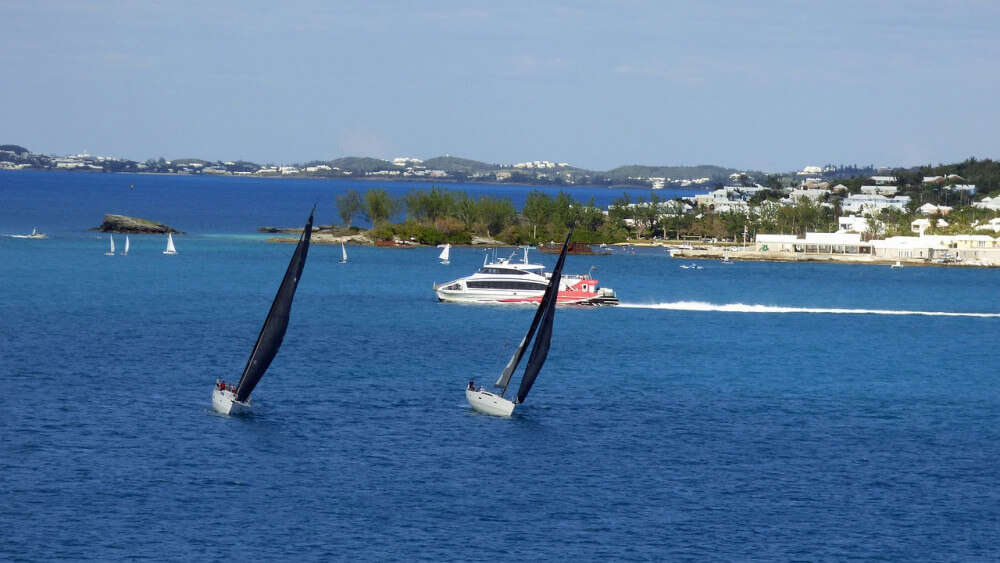
Sailboats come first. If you're sailing and not motoring, you generally have right of way over motorboats.
If a motor vessel is large and has a hard time maneuvering, it may get right of way over the sailboat.
The exceptions are:
- Very large motor vessels in large channels
- Large motor vessels (over 65 feet) in narrow channels
- Motor vessels that are in trouble
- If a sailboat is overtaking the motor vessel, the latter has right of way
Please note: if you're on a sailboat and use the engine, you're considered a motorboat.
This seems like a bold statement, but sailboats actually are much safer than powerboats. Sailboats are more stable than powerboats, precisely thanks to the characteristics that we need for sailing.
- They are generally heavier and have a deeper draft.
- Most sailboats also have a centerboard or keel, making it nearly impossible for them to capsize.
- The hull materials used for sailboats is heavier.
All these factors help the sailboat to be more stable on water.
The powerboat has an achilles heel. The reason it's so fast is also the reason it's less safe.
First of all, a powerboat can go a lot faster, making it unsafer in general.
To go faster, the powerboat's hull has a lot less draft than the sailboat. It's lightweight, allowing it to plane. Planing a boat means the bow comes out of the water, which reduces the water resistance. This is great in smooth weather, but it can be dangerous with heavy winds. If the wind catches the hull, the powerboat may flip over (powerboats are known to do this).
Besides being safer, sailboats are also more reliable.
If you run out of fuel on a powerboat, that's that. You'll have to wait to be saved.
A sailboat typically only carries fuel for when the sailor gets bored. It's to speed up light air sailing, because sailing in light wind can be quite intensive, and doesn't go very fast. However, if you run out of fuel, nothing happens. (Even if, at the same time, the wind disappears completely, it's just a matter of time until you can get back at it and save yourself).
True: you can get dismasted on a sailboat. But that's an incident. Running out of fuel on a powerboat is a certainty, because that's what it's made for: burning fuel, and lot's of it.
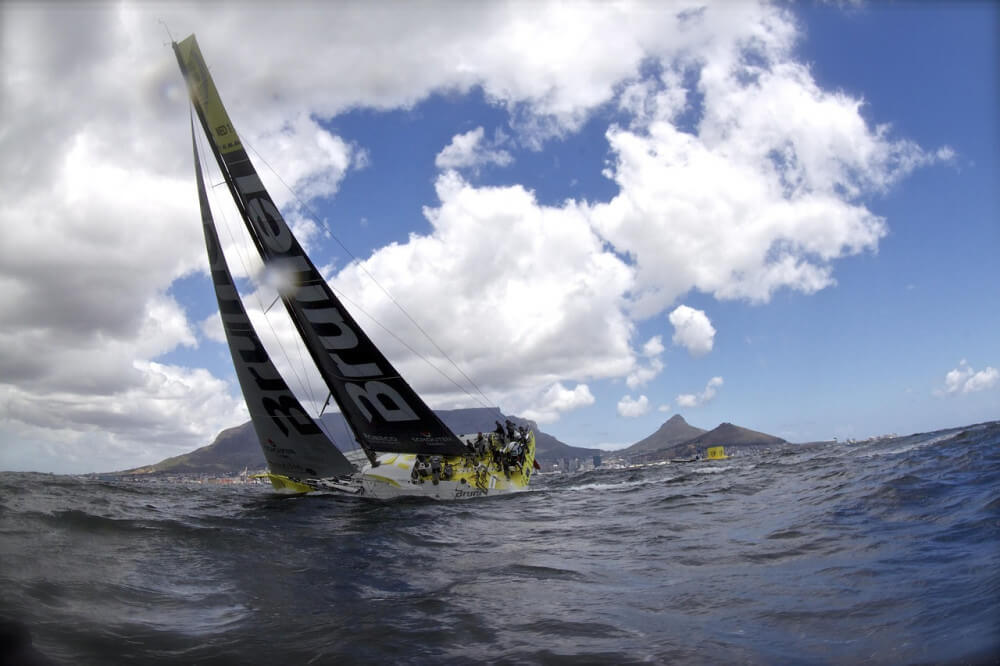
In general, sailboats are more about the journey, and powerboats are more about the destination.
If you need to go somewhere quickly, the powerboat is the quicker, more comfortable way to do it. If you want to go for lunch on an island, having an engine do the work allows you to drink a beer while you wait to arrive. In this regards it's no different from a train.
Yes, a powerboat is comfortable ... because it's boring.
But sailing is so much more. If you get out on the water for the sake of being there, sailing is for you.
It's exciting to plot a course and then try to figure out how to use the wind to get there. It requires some physical strength to operate the mainsail, which is why it's more rewarding.
But most of all: it's just a thrill to harness the force of nature with your own hands.
If you make a mistake by plotting a less-than-ideal sailing course, you could find yourself tacking upwind for the rest of the afternoon. A powerboater would just spin the wheel and go that way instead. It's true, the engine is perhaps the superior technology here.
But have you ever wondered why a powerboat uses so much fuel? It's on water after all. Well, they work against nature. They have to plow through each wave, pushing itself forward.
It's a sort of Monday-morning-boat - it doesn't really want to go.
So you first have to fill it up with plenty of liquids.
A sailboat uses drag and lift to propel itself forward. It's almost symbolic - like it wants to go forward . All you do is finding the right point of sail, and let it.
This may sound a bit corny, but I believe sailing is a form of self-improvement.
Every time you find yourself in heavy weather and deal with it, you improve your self-confidence. Every time you successfully plot a course, or cross an ocean, or even find the right point of sail, you improve.
You improve by overcoming these challenges. Sailing is a form of art: learning to read the wind, the waves, to feel your boat.
Every time you fail, you learn as well - sometimes about sailing, but also about yourself. It helps you to get to know yourself.
Getting good at sailing is a very rewarding process, but it can take time, and be frustrating at times.
But the reward is huge. If you know how to sail, you know how to navigate, how to harness the power of wind, and how to master the seas.
By sailing you become a seaman; by powerboating you become, well, a powerboater.
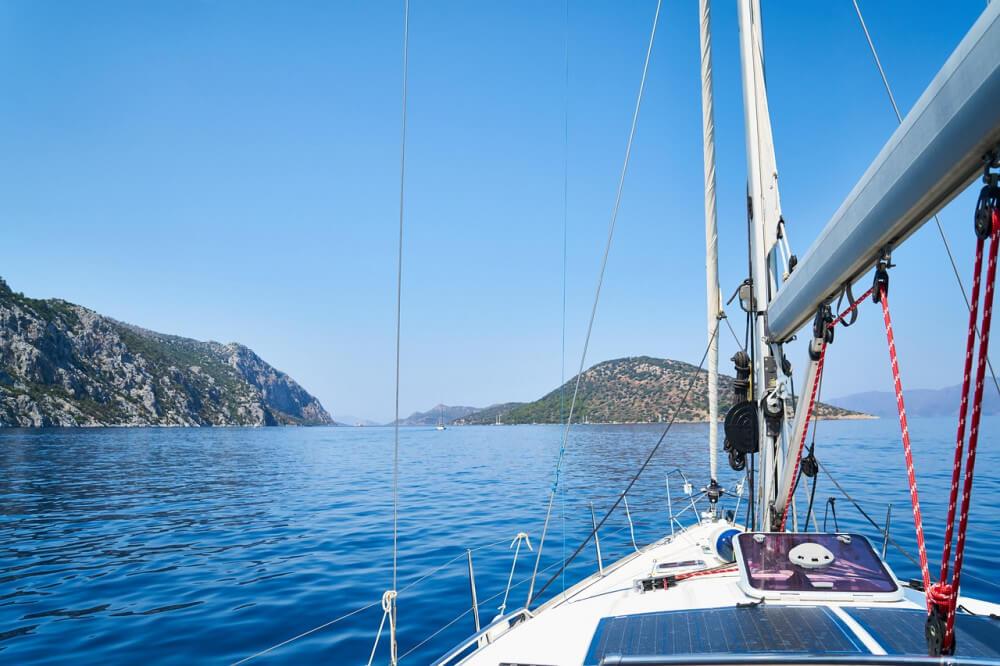
Sailboats can go pretty much anywhere. Okay, to be fair, they have a deeper draft, so some places are off-limits. (However, if you have a boat with a centerboard, you can fix this pretty easily.)
But, overall, sailboats get to go more places.
- you can sail in waters where motoring isn't allowed
- you can sail in rougher waters like the ocean or lakes
- you can sail in more weather conditions
Some waters are protected, due to birds breeding there, or some other preservation rule. Sailboats can just go there, because they don't disturb the wildlife in any way.
If you own a powerboat, you're probably not thrilled with 12-knot winds. Also, wind gusts can be a big problem. If the weather is unsettled, you probably don't bother going out.
If you own a sailboat on the other hand, you're probably excited. Sailboats are made to handle rough waters. You'd be surprised how well small sailboats are able to handle extreme conditions. This is thanks to the same factors I've mentioned reason 6 - safety.
You can also go for longer trips without worrying about the next gas station. You can actually just leave indefintely and be fine on a sailboat.
Alright, I'm going out on a limb here. Of course, you can live on a powerboat as well, if it has a cabin. Most don't. Pretty much all sailboats over 24' have a cabin. It's small, but you can definitely live there.
The most important argument is the cost. Pretty much all powerboats with living accommodation are just incredibly expensive.
You can actually live pretty decently on the $1,500 sailboat from Craigslist I've used for sailing to Hawaii.
Want to live on a powerboat? Think more in the $50,000-ballpark.
Powerboats are not made for open sea. Sailboats generally are. I know, I go on and on about it.
"Ok, I get it. They're more stable, have a stronger hull, better hull shape."
Surely any sailboat under 30' (9 m) isn't made for the ocean, right?
Well, I'm afraid it's far worse.
The smallest sailboat ever to sail around the world was 21 feet (6.4 m) .
Try and cross an ocean in a 21' powerboat (- and then tell me how much it cost you to fuel it without crying).
Point in case is that even a small sailboat can get you almost anywhere, but a powerboat can't do it. It's not made to do so. It's made to fly over the water for a short distance, look cool, then return home.
Powerboats can be great fun. Expensive, yes, but so is every hobby.
Powerboats aren't all bad. I actually quite like them. Two friends of mine co-own a Mastercraft 220 (Ford V8). They let me take her out for a spin once. Oh boy was it fun.
And powerboats do have some real advantages over sailboats. They are a bit more flexible inland. They are very comfortable. And then there's these things:
Places you can't go
As I've mentioned, powerboats have a lot less draft than sailboats. This means you can use them in very shallow waters, like the canals of Giethoorn (which is near my hometown). Even a sailboat with centerboard has a hard time here.
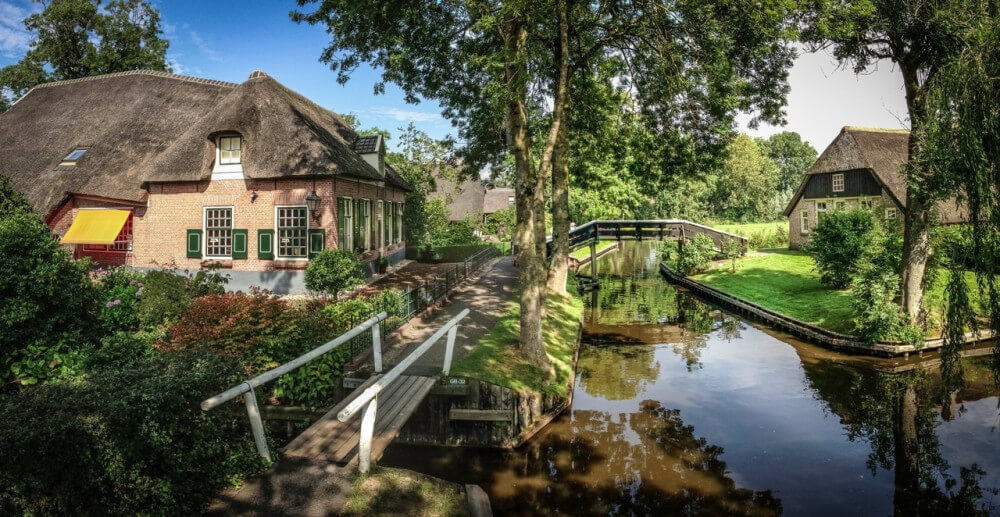
Oh, and have I mentioned bridges before? Can't go there in a sailboat.
Cost of sails and rigging
Another disadvantage of sailboats is the cost of equipment. Equipment like rigging, sails, can be very expensive. Sails have to be replaced every 3,500-4,000 hours. The rigging needs replacing every 10 years or so.
The sail will cost you anywhere from $1,000 - $3,000 for a mid-sized sailboat.
The rigging will cost you anywhere between $800 - $2,600.
So that's roughly $5,000 every 5-10 years. Which is expensive, but hey, you get to sail to Hawaii for free.
My guess is your fuel cost (or lack thereof) will pay for this easily.
If you wan't to go in-depth on the cost of sail replacement, I've just written an article with formulas and tables. Check it out here.
Other disadvantages of sailing
- You can't wakeboard behind a sailboat (or maybe you can, but we've never tried).
- In general, towing is probably a better idea using a powerboat.
- Also, sailboats generally offer less space than a powerboat.
- You are always busy
I would prefer a powerboat over a sailboat if I have to get somewhere. For example:
- for fishing trips
- for family day-trips to a beach or island
- if I'm a Coast Guard
- if I want to water ski or wake board
Which is safer: a sailboat or motorboat? A sailboat is safer than a motorboat. Most sailboats have a deeper draft and a keel to improve their handling in rough water. This makes them more stable. Powerboats are light weight to increase speed, making them more prone to wind. Sailboats are generally slower than motorboats, which makes them safer overall.
Are sailboats cheaper than powerboats? A sailboat is cheaper to purchase and to run than a powerboat. A second-hand sailboat is about half the price of a powerboat. The engines on powerboats are a lot more expensive than those on sailboats, which adds to the maintenance cost. Fuel consumption of a powerboat can range between 5-30 gallons ($20-120) per hour.
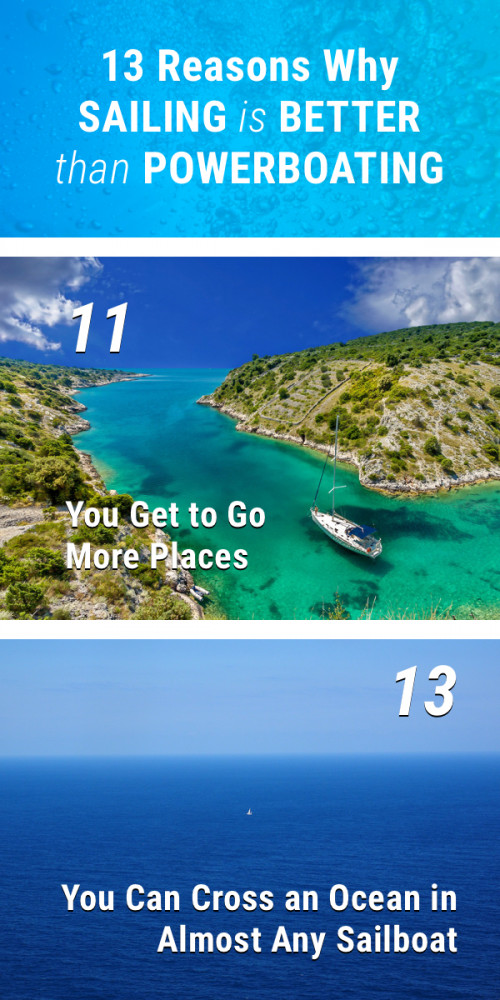
Leave a comment

COMMENTS
US Powerboating is an affiliate of US Sailing, the National Governing Body for the Sport of Sailing in the United States. Who We Are Our Mission Our Courses. Whether you are a lifelong boater looking to brush up on your skills or have never been on the water before, we have opportunities available for you!
US Powerboating offers the nation's best and most comprehensive hands-on boating courses. Whether you're looking for your first experience at the helm or aiming to improve your skills, we can help. As the National leader in on-the-water powerboat training and education our goal is to empower students with the skills and confidence they need ...
Florida Sailing Academy Florida Powerboating Academy Mar Adentro Marine and Charter Services, LLC. 2001 Whitfield Park Ave. Sarasota, FL 34243. Contacts Phone: 941.500.2485 Office: 941.758.7500 Fax: 941.758.7556 Email Us! Links Mar Adentro Marine and Charter Services, LLC. ...
Windworks Sailing and Powerboating, Seattle, Washington. 1,579 likes · 19 talking about this · 536 were here. Come sail with us! Get certified to skipper your own boat, or sit back, relax, and let...
Choosing between sailing and powerboating can be a tough decision for anyone looking to spend time on the water. Each type of boating offers unique experiences, advantages, and challenges. Understanding the key differences between sailing and powerboating can help you decide which is the right fit for your lifestyle and…
Skipper the newest, most enjoyable charter yachts on SF Bay. Build your skills and confidence in our award winning, accredited school. Call us: 800-343-7245
Florida Sailing and Powerboating School and Charters is an ASA affiliate school and charter service located in Sarasota, Florida. With boats and instructing locations around the Sarasota/Bradenton, St. Petersburg/Clearwater, and Tampa Bay area including the Gulf of Mexico. Our sailing and boating waters extend over the entire Tampa Bay waters with easy access to the Gulf of Mexico and points ...
Sailboats require a more hands-on approach, which many people prefer. Yet, powerboats have less maintenance and more speed. Which kind of boat you choose depends entirely on what kind of experience you want to have. Powerboats are easier to operate, and they require a little experience. But, they are costly to keep running and you're reliant ...
US Powerboating's courses are offered through approved schools, community programs, clubs, and marinas. US Powerboating is an affiliate of US Sailing, a non-profit 501(c)3 organization and the National Governing Body for the sport of sailing in the United States. US Sailing works to achieve this mission through a wide range of programs and ...
We offer a range of boating courses for individuals of all skill levels. Our hands-on, on-the-water courses get you out of the classroom and behind the wheel for an educational experience unlike any other! Our courses are offered at nearly 150 Course Providers and Powerboat Training Centers around the country and all are open to the public.
US Powerboating provides a variety of resources to help boaters educate themselves. Below are a series of videos and animations that depict some of the on-the-water maneuvers all boaters should be able to perform. After checking an area, approach the anchoring spot slowly, heading into the wind or current, whichever is stronger.
Nationwide Hands-on Boating Instruction. Nautical Solutions provides on-the-water, classroom, and professional education for sailing and powerboating. All of our instructors are USCG licensed, insured, and Instructor certified by US Powerboating and/or US Sailing. We offer group classes, certification courses, private instruction, insurance ...
Speed. For liveaboards, speed usually isn't a priority, but you should know what to expect from your purchase. Yes, powerboats are generally faster than sailboats. The average cruising speed of a sailboat is somewhere around 6 - 8 knots, while powerboats can easily go around 20 or more if you put your foot down.
Powerboat Instructor Programs. US Powerboating is an affiliate of US Sailing and offers the nation's best and most comprehensive on-the-water training and education courses for recreational boaters. Our hands-on courses are taught by Certified Powerboat Instructors who empower students with the skills and confidence they need to get more out ...
Sailing is typically less expensive than powerboating. The initial purchase price of new luxury sailboats ranges from $100,000 to over $1 million, while ordinary powerboats are priced between $100,000 and $200,000. Meanwhile, larger and more luxurious powerboat models easily exceed $1 million. The cost of insurance for a sailboat is also lower ...
US SAILING offers certifications for both sailing and powerboating. Once earned, these certification credentials, in conjunction with your continuing experiences, are recognized by charter companies and sailing schools worldwide as the status of your accomplishments in the world of sailing. OCC - US Sailing Cruising Certifications
Windworks Sailing and Powerboating Club is committed to making boating available, affordable, and approachable. Fun for both beginners and experienced sailors, we are your home for sailing lessons, boat charters, and social sailing events. Located in Shilshole Marina next to Ballard Locks in Seattle, Washington, we are ideally located for ...
Sailing is a blast at all ages and skill levels, join us on the water! Sailing: Builds knowledge and independence Encourages team working skills and seamanship Offers exciting challenges or a peaceful escape Creates lasting relationships and memories US Powerboating US Powerboating offers the nation's best and most comprehensive hands-on boating courses Whether you're looking […]
For those interested in teaching sailing or powerboating, there are several opportunities to achieve Instructor Certification. We offer certification for smallboat, keelboat, powerboat, windsurfing and STEM instructors. Courses range from 2 days to 5 days, and are hosted by boating programs around the country, year-round. ...
I also became a licensed Florida Boat Broker in 2019. • Certified Instructor for ASA/RPBA to teach sailing and powerboating up to 70 ft length-2016 to current. • Private Pilot-SEL, Instrument Rated, Jet Aircraft SIC, High Performance, and High-Altitude Endorsement. • Scuba Diver-PADI Certified 1978-Advanced Open Water, Tech I Deep Water-2017.
Specialties: Windworks has a fleet of 21 sailboats and power boats for charter and offers US Sailing and Powerboating lessons for beginners. We can host private skippered charters for up to 6 people, and have a great corporate program for team building activities. Our fleet starts at 22' to 46' late and brand new model sailboats and powerboats. Save on lessons and rentals by becoming a ...
SEAS OFFICE - 1837 Superior Ave, Sheboygan WI 53083 I 920.783.3670. Sailing Education Association of Sheboygan, Inc. is a 501(C)(3) Nonprofit registered in the US under EIN: 45-5479135. Book Now. Providing sailing and boating instruction and experiences for everyone. Adaptive sailing, power boating & sailing classes, maintenance and educational ...
Not only because it removes a nuisance - it actually allows better smells and sounds to reach you. 3. Sailing is Cheaper. So, besides being less noisy and smelly, a sailboat is also way less costly than a powerboat. Running a powerboat is notoriously costly, and for a good reason. You use A LOT of gas.